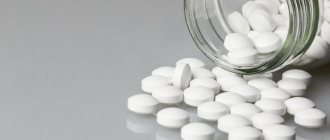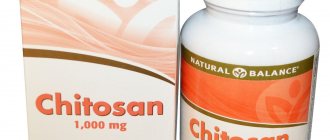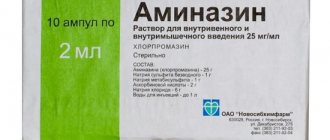Diuretic drugs are included in the complex therapy of hypertension, thereby increasing the duration of the therapeutic effect. Diuretics for high blood pressure allow you to remove excess fluid from the body by increasing the filtration capacity of the kidneys. As a result of this action, narrowing of the vascular lumen is prevented and blood circulation is normalized. Today, pharmacological companies present a wide range of diuretics that have similar therapeutic effects, but have different effects on the body with long-term use. How to choose the right medicine to reduce the risk of complications?
Diuretics: what are they?
Diuretics are medications that speed up the formation of urine and its elimination from the body.
Such drugs are prescribed primarily to combat tissue swelling due to diseases of the cardiovascular system, kidneys and liver, as well as to treat severe pathological conditions that require rapid fluid reduction.
All diuretics differ in the mechanism of their diuretic effect. The pharmacological property of the drugs is their effect on the epithelium of the renal tubules, where urine formation occurs.
In addition, some medications affect certain enzymes and hormonal substances that are responsible for normal kidney function.
Classification of funds
Diuretics for the treatment of arterial hypertension are used in various combinations and can be part of antihypertensive drugs. As a rule, specialists prescribe fast-acting forms, since they are able to stabilize blood pressure within 7–10 minutes, which is an important property in stopping a hypertensive attack. However, these forms are contraindicated for long-term treatment of the disease, since they can cause addiction and reduce the body's susceptibility.
Diuretics for hypertension must have two properties:
- The severity of the action (weak, moderate, powerful) allows us to assess the initial effect of the drug and the excretion of maximum volumes of fluid.
- The duration of the effect determines the optimal dosage and frequency of taking the tablets.
Today, pharmacies offer many classes of diuretic drugs, which differ in mechanism, strength and duration of action.
The list presents the main groups of diuretic drugs and their representatives
List of medications with a diuretic effect, used depending on the indications:
- Thiazide. The most commonly used class, since it allows you to smoothly stabilize the level of systolic blood pressure (Indapamide, Chlorthalidone).
- Loopbacks. Widely used to relieve attacks of hypertension (Lasix, Torasemide, Furosemide).
- Potassium-sparing. Indicated for patients with disorders of the myocardium and vascular system, since their action is aimed at preserving potassium in the body (Amiloride, Veroshpiron).
Before starting treatment, a hypertensive patient must understand which diuretic is best for hypertension in order to protect himself from possible complications.
Thiazide class
The first synthetic group of diuretics, which was synthesized from chlorothiazide molecules, capable of binding large concentrations of chlorine, sodium, and calcium entering the body from table salt. Due to the molecular structure of thiazide drugs, the reabsorption of liquid and salt from primary urine is prevented, stimulating their excretion. The most effective drugs are at the initial stage of the pathology or for hypertension occurring with increased systolic pressure, which is typical for elderly patients. Taking tablets can reduce the risk of developing heart failure, cerebral and myocardial ischemia due to arterial hypertension.
Medicines in this group affect the resistance of peripheral vessels, improving hemodynamics, helping to reduce blood pressure levels
The mechanism of action of the thiazide class is to act on the epithelial membrane of the nephron, as a result of which the concentration of chloride and sodium ions in the plasma decreases. Elimination of intracellular fluid leads to a decrease in swelling of blood vessels, thereby normalizing blood pressure.
Diuretics act gradually, without having any additional effect on the organs. However, long-term therapy can cause addiction, which leads to a reduced diuretic effect and higher doses, increasing the number of side effects.
Benefits of admission:
- has a smooth diuretic effect;
- taking low doses causes virtually no side effects;
- increased calcium excretion prevents the formation of kidney stones;
- Possibility of use for metabolic disorders;
- feasibility of use in chronic edematous syndrome.
Treatment with representatives of this series can bring negative consequences for hypertensive patients, since the leaching of minerals and salts in large quantities leads to disruption of the functioning of many organs and systems.
Medicines with prolonged action
The most common thiazide diuretics for the treatment of hypertension are:
- Chlorothiazide. It is the first drug developed in this group. It has a moderate therapeutic effect, so it does not cause complications from the myocardium and kidneys.
- Arifon. Contains the active substance indapamide, which is part of many analogues. It is a fairly safe representative, since it has virtually no effect on metabolic processes, so its effectiveness does not depend on the level of glucose and cholesterol in the bloodstream.
- Hypothiazide. The active substance is hydrochlorothiazide, which is excreted by the kidneys, so if the excretory system is disrupted, the drug should be taken in a moderate dose.
Class of loop diuretics
Loop diuretics have a pronounced therapeutic effect, and practically no side effects are observed when taking them. Experts say that this group is not the strongest diuretic, but this makes it possible to use them for long-term treatment of hypertension with a lower risk of complications.
Loop diuretics allow gradual stabilization of blood pressure, but they do not prevent complications arising from arterial hypertension
The mechanism of action of this group is localized in the loop of Hengle, where rotary and countercurrent regulation of urine is carried out. Diuretics slow down the absorption of sodium and chlorine ions and reduce the absorption of magnesium. As the concentration of microelements decreases, the production of parathyroid hormones decreases, as a result of which calcium absorption deteriorates, which aggravates the severity of the diuretic effect.
Medicines from a number of loop diuretics are practically not prescribed for the regular treatment of hypertension if the patient does not have concomitant pathologies. As a rule, medications are prescribed to patients who have developed renal or heart failure as a result of the disease, and also have severe edema syndrome. It is also recommended to take tablets for increased intracranial pressure as a result of vascular pathologies. Intravenous forms of the drug cause instant relaxation of blood vessels, thereby normalizing blood pressure, which is why they are used to eliminate a hypertensive crisis.
Furosemide for intravenous administration
In case of hypertensive crisis, intravenous injection forms of diuretic drugs (torasemide, furasemide) are used. However, they are not prescribed as monotherapy for hypertensive crisis, but exclusively in combination with other diuretics.
Representatives of this series, most often used for hypertension:
- Lasix (helps eliminate swelling by removing chlorine and sodium).
- Furosemide (has an effect on peripheral vessels, resulting in rapid stabilization of blood pressure).
- Torsemide (has a prolonged effect, while loss of potassium occurs to a lesser extent).
- Diuver (the effect of the medicine is manifested in a state of rest).
The listed representatives can lead to a significant loss of microelements, therefore, when taking them, it is recommended to constantly monitor the functional state of the body, as well as monitor the functioning of the pancreas.
Potassium-sparing class
A group with a long-term therapeutic effect with mild stabilization of blood pressure. The diuretic property appears a few days after the start of administration. As a rule, specialists prescribe medications to eliminate swelling and prevent potassium loss from the body. Due to the weakly expressed effect of representatives of the class, it is recommended to take it in combination with the thiazide group to achieve a pronounced hypotensive effect.
Taking representatives of the potassium-sparing group prevents the development of hypokalemia, which has a positive effect on the myocardium
Drugs that prevent potassium loss are aldosterone antagonists, so their action is based on slowing down the synthesis of adrenal hormone, which makes it possible to excrete sodium in the urine without excreting potassium.
Prescribed for persistent forms of arterial hypertension, when the patient has severe edema
Depending on the concentration of the active substance, the following good potassium-sparing tablets are distinguished:
- Triampur. Helps reduce sodium ions in the distal tubules, while preventing the excretion of calcium. The medicine is quickly adsorbed in the digestive tract, so the effect is achieved 4 hours after administration.
- Eplerenone. The active substance acts selectively on aldosterone receptors, due to which it does not affect the synthesis of steroid hormones, reducing the risk of complications. The therapeutic effect is observed 14 days after use. The medication is not prescribed to hypertensive patients with concomitant diabetes mellitus, renal and liver failure.
- Triamtezid. It has a mild diuretic effect, but its effect occurs 20 minutes after administration. It is recommended to take the product after a meal with plenty of liquid.
Indications for diuretics
The main indications for taking diuretics are the following conditions:
- Elimination of swelling of cells and tissues as a result of varying degrees of heart failure and vascular diseases.
- Kidney pathologies.
- Normalization of high blood pressure.
- Removal of toxic and other harmful substances from the body due to poisoning.
- Ascites.
- Liver cirrhosis.
- Glaucoma.
- Osteoporosis.
Edema is the main symptom of pathological conditions of the heart, blood vessels and dysfunction of the excretory system. Fluid accumulation is associated with retention of high amounts of sodium. The mechanism of action of diuretics is precisely that it removes sodium from the body, thereby eliminating swelling.
At high blood pressure levels, increased sodium content negatively affects the tone of blood vessels, leading to their narrowing. Therefore, taking diuretics removes this element from the body, increasing the lumen of blood vessels and normalizing blood pressure.
Due to poisoning, a certain amount of toxins and harmful compounds is reduced during kidney function. However, in order to speed up their elimination, patients are necessarily prescribed diuretics. First, patients are given an intravenous infusion of medicinal solutions, and then diuretics are administered, which, together with the liquid, eliminate toxic substances from the body.
How do diuretics work for hypertension?
The development of hypertension is based on a violation of the mechanisms of sodium excretion by the kidneys. When an increase in blood pressure occurs in the body, the excretory system tries to compensate for the imbalance by removing sodium ions and fluid to normalize physiological parameters. However, in hypertensive patients, compensatory mechanisms are impaired, so independent excretion of excess water occurs at maximum blood pressure values.
Diuretics lead to sodium imbalance
Diuretics have a pronounced therapeutic effect against high blood pressure due to diabetes mellitus. Since the pathology is characterized by increased susceptibility to sodium chloride, the result is an increase in the amount of fluid in the bloodstream, which is detected by an increase in blood pressure. For type 1 diabetes, preference is given to the thiazide group of drugs in minimal doses. Loop diuretics are used to relieve a hypertensive attack, but their long-term use is contraindicated. Some types of medications can worsen disturbances in glucose metabolism, which must be taken into account in the treatment of this category of patients.
The hypotensive effect of diuretic drugs is based on two mechanisms:
- Diuretic (increasing the daily amount of urine, as well as excretion of water and minerals).
- Non-diuretic (promotes the expansion of the vascular lumen by reducing the concentration of intracellular sodium ions).
The duration of the therapeutic effect is about 2–3 months, then the number of urinations decreases in parallel with the stabilization of heart contractions. This phenomenon is due to the inclusion of a compensatory mechanism that prevents fluid loss by increasing the concentration of renin and aldosterone in the blood.
Contraindications of drugs
The use of diuretics is not always advisable. There are certain conditions that prohibit the use of this type of medicine. These include:
- Low potassium levels in the blood.
- Individual intolerance to sulfonamide substances.
- Severe form of respiratory failure.
- Acute kidney diseases.
- Any type of diabetes.
An implicit contraindication to taking diuretics is ventricular arrhythmia. This clinical condition requires adjustment of the therapeutic dose and strict medical supervision.
Diuretic tablets for edema
To combat swelling, the most effective drugs are:
- Lasix is a loop diuretic that prevents sodium and chlorine retention.
- Britomar is available in the form of tablets for oral administration. Has long-term therapeutic activity.
- Diuver is a loop diuretic medicine. Often prescribed for heart failure and severe edema.
All medications have contraindications, so they must be taken as prescribed by a specialist.
Diuretic pills for weight loss
Taking diuretics has a positive effect on weight loss. This is due to a decrease in excess fluid in the body, acceleration of metabolism and a decrease in appetite. However, you should take medications carefully to avoid side effects. Therefore, you should consult your doctor first.
List of effective diuretics for weight loss:
- Furosemide.
- Hypothiazide.
- Veroshpiron.
- Phytonephrol.
- Phytolysin.
What herbs should be used for hypertension instead of diuretics
Natural plants that have a diuretic and sedative effect are more likely to help with hypertension than drug diuretics. The main rules for taking herbs are moderate dosage, taken in the morning and mandatory consultation with a doctor. What herbs can you drink to remove excess fluid:
- Rowan - red fruits normalize blood circulation, strengthen muscles and joints, burn fat;
- Dill - calms the nervous system, stimulates the liver and kidneys, improves sleep, supplies the blood with microelements;
- Thyme - promotes normal circulation in blood vessels, has a positive effect on internal metabolism;
- Motherwort - provokes the removal of water from the kidneys, calms rapid heartbeat, eliminates vascular spasms;
- Birch - leaves and juice regulate sugar levels, break down kidney and bladder stones, block joint pain;
- Barberry - cleanses the liver of toxins, relieves atherosclerotic plaques and cholesterol, dilates artery walls.
It should be remembered that any herbal diuretics for hypertension wash out potassium, so Dr. Shishonin recommends adding potassium-containing foods to the diet.











